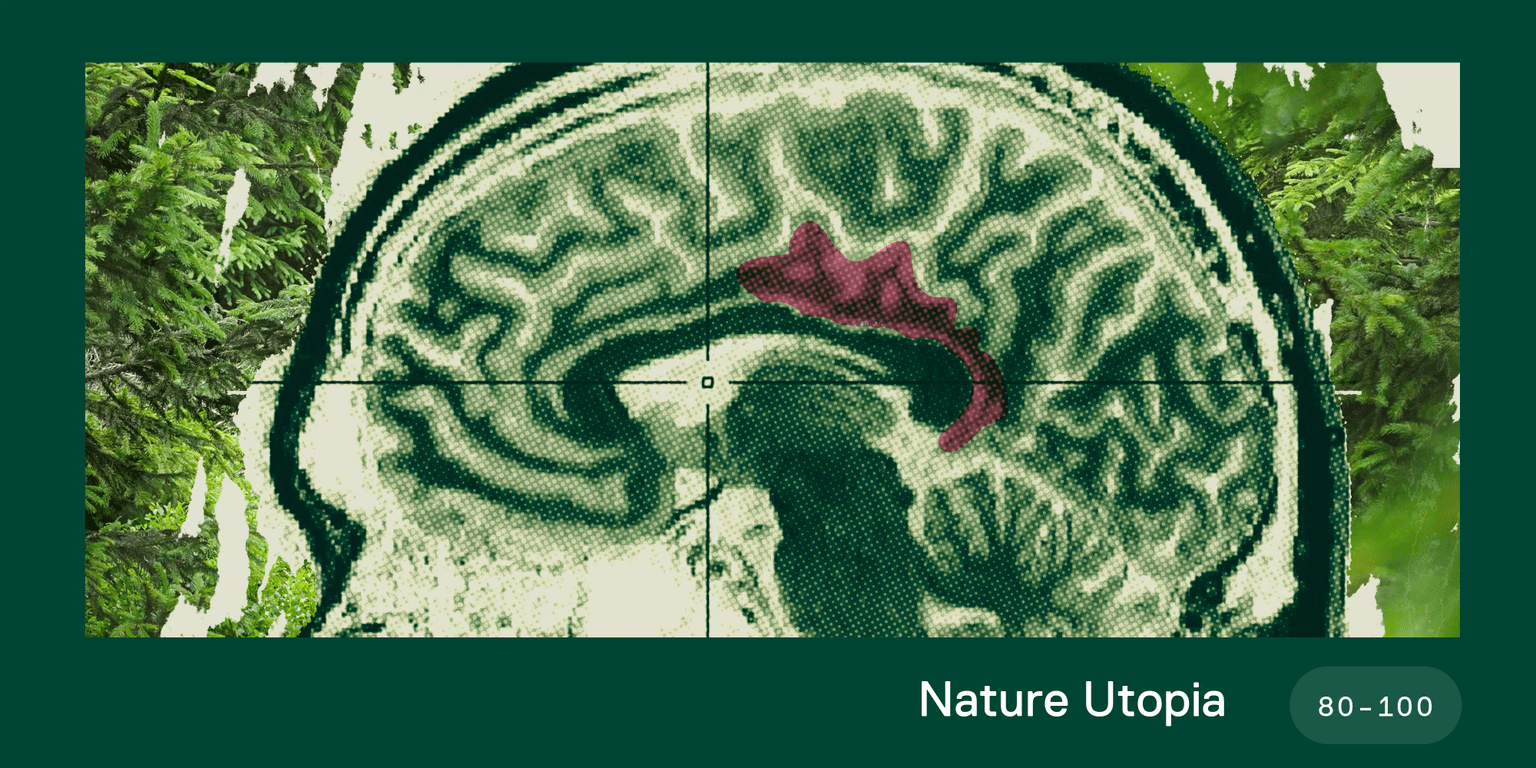Neuroimaging and Green Landscapes
Neuroimaging Provides Insights on the Relationships Between Greenspace and Mental Health.

Key Points
- According to new research published in the journal NeuroImage, viewing greenspace (as opposed to an urban landscape) elicits substantial activity in key areas of the brain related to attention and stress regulation.
- While time spent in a natural setting has been observed to provide positive mental health outcomes, until now the mechanism of action has been poorly understood.
- Using functional magnetic resonance imaging (fMRI) to examine the brain activity, researchers observed systematic differences in brain responses based on the greenspace density of urban images; these differences correlated with stress and preference ratings.
- NatureScore® is a new and powerful tool that allows users to quickly determine the relative amount of nature around their location, which can promote mental health.
Neuroimaging and Green Landscapes
A growing body of scientific literature demonstrates that exposure to natural environments benefits mental health. For example, a short walk in a natural setting, as compared to an urban setting, reduces rumination behavior. Self-perceived mental health is better for those living in greener environments. Having a green view from a hospital bed can accelerate recovery. Even having a “nature image” as a screensaver has proven to improve worker productivity and reported workplace satisfaction. Still, the neural and mechanistic reasons that green environments drive positive mental health outcomes have remained largely unknown.
But new research published in the journal NeuroImage sheds light on the relationship between greener urban landscapes and mental health.
“In the past decade, there has been a lot of research across varying disciplines that has converged to indicate that nature-containing environments such as those carrying an abundance of trees or foliage can enhance mental well-being,” said study authors from the University of Hong Kong in a joint statement. “For example, individuals exposed to green environments report lower levels of stress than those in less-green settings. In this work, we were interested in asking just how green environments engage the human brain, and how stress-regulatory benefits come about from exposure to these environments. It is one thing to show that all these environments are good for us — but it is just as important to understand why.”
The team of scientists observed systematic differences in brain responses based on the greenspace density of the urban images and correlated those differences to stress and preference ratings.
The researchers monitored brain activity while showing subjects images of urban landscapes with varying levels of greenspace density. They observed that varying degrees of green-cover activate a primitive part of the brain — the posterior cingulate — that is known for its role in serving motivation and emotion-related responses.
“When we varied the green-content contained in our scenes, we saw corresponding changes in the activity of this same region that was surprisingly well-matched to the subjects’ own reported stress-ratings after viewing these same images. It appears then, that the cingulate is a key area that serves our (human) sensitivity to green-spaces, and acts as an early driver that ultimately interfaces with stress regulatory responses in the neuroendocrine system.”
While we already knew from statistical studies of populations that green space exposure is physiologically important to health, we now know more specifically what brain activity is occuring.
In response to an increasing appreciation for the value of greenspace, a new technology can now deliver a NatureScore® for any location in the United States to help users understand the relative amount of near-by nature. Additionally, the elements in the NatureScore® were blended via an iterative machine-learning system to optimize positive health outcomes. The NatureScore® techniques yielded highly predictive tools. High scores were associated with increased longevity and low scores were associated with poorer health outcomes, including cancer, diabetes, and cardiovascular disease. See this whitepaper for more details.
These results affirm the importance of a regular dose of greenery — especially in the stressful times we are currently experiencing. Go outside, visit a park, walk the greener route, or consider paying a bit more on rent for a view with more trees. Further, as an increasing percentage of our population lives in urban environments, the importance of city planning that incorporates natural elements is becoming clear.
The results also suggest the need for further investigations regarding what other features of natural environments city planners, health practitioners, and individuals may use to promote mental health.